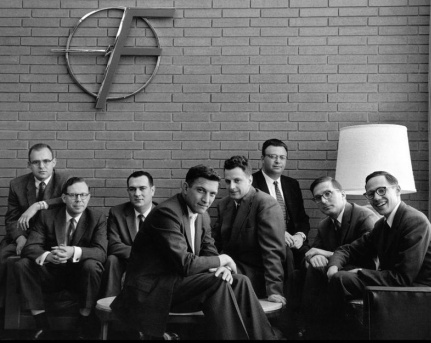This is part 2 of 4 in our continuation of The Maker of Moore’s Law series. (read part 1 here)
The private industry
In 1956, Moore went back to California to join the Shockley Semiconductor Laboratory. William Shockley, one of the inventors of the transistor, had recently started the Laboratory to explore the new field of technology.
Unfortunately, prize-winning scientists don’t always make the best managers. Moore spent nearly two years at the Shockley lab before resigning with a team of other colleagues to create a new company called Fairchild Semiconductor Corporation. Shockley wasn’t pleased, calling the group the “traitorous eight.”

source: wikipedia.org
Shortly after starting the new venture, Moore was promoted to director, and Fairchild became a major manufacturer of transistors. Moore would continue to work here for the next decade.
Moore’s Law
In 1965, the journal Electronics asked Moore to predict the future of electronics over the next 10 years. During the research for his response, Moore reviewed the history of electronics and semiconductor technology and discovered something interesting. He realized that the capacity of components per silicon chip had been doubling nearly every year. This included transistors, resistors, capacitors, and diodes within integrated circuits.
It’s a rather simple insight, perhaps even recognizable to the common observer. Being the first to see and write about it, Gordon called it “Moore’s Law.” This is perhaps what Gordon is most famous for, even though it was actually Carvar Mead who popularized the term. Initially Gordon estimated that the capability would double each year, and then adjusted it to double every two years. The rapidly changing frontier of electronics had some inherent variability, even still his predictions are incredibly accurate.

source: wikipedia.org
The law is not actually a natural or physical law; it’s an observation. It’s also not entirely precise, as the rate has slowed down over the last few years. Some say that Moore’s law will become obsolete within the next few years, but most agree that the deceleration is simply a natural part of the law. As we approach more significant technical barriers, the rate of technological progress will become more sporadic.

